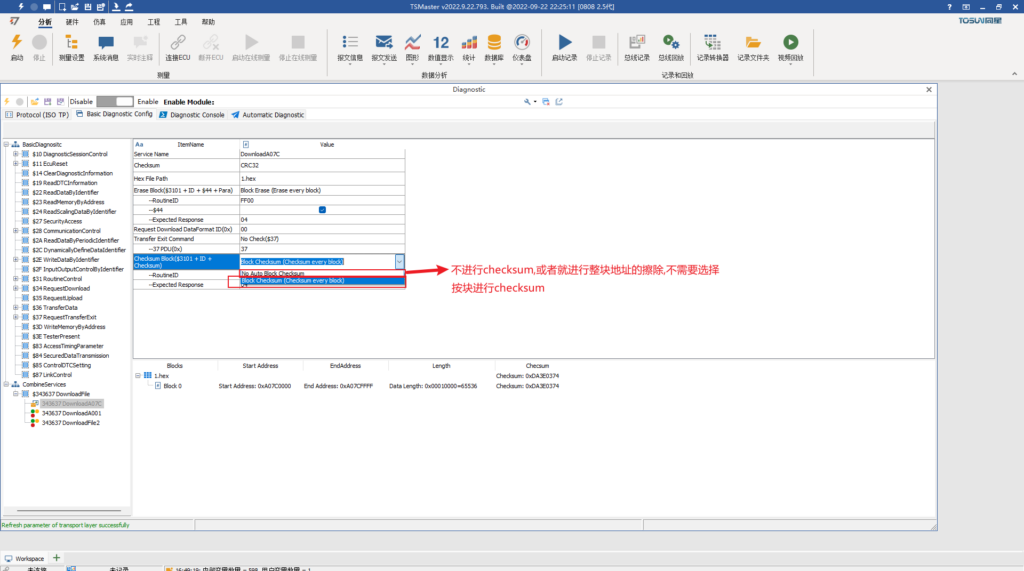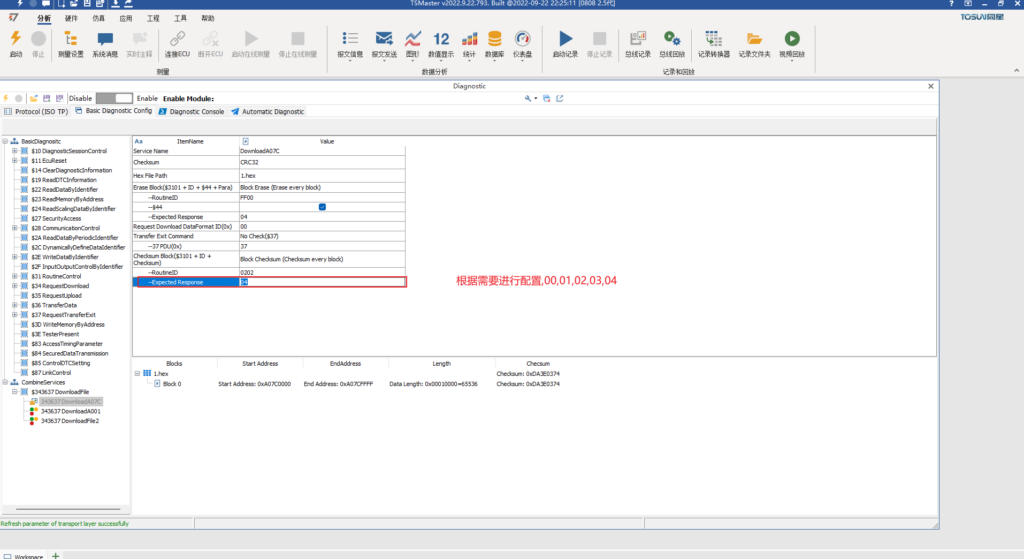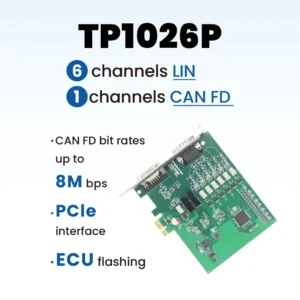overview
Overview:
Today we introduce you the UDS diagnostic flash process based on TSMaster. The basic process is mainly divided into two parts: basic parameter configuration and swipe writing process.
I. Basic parameters configuration
Basic parameter configuration
1、New construction
Open the TSMaster software, select Create New Project - Diagnostics - UDS Diagnostics, then select a new working directory, create a new folder, and click to select it and then go to the TSMaster project file.
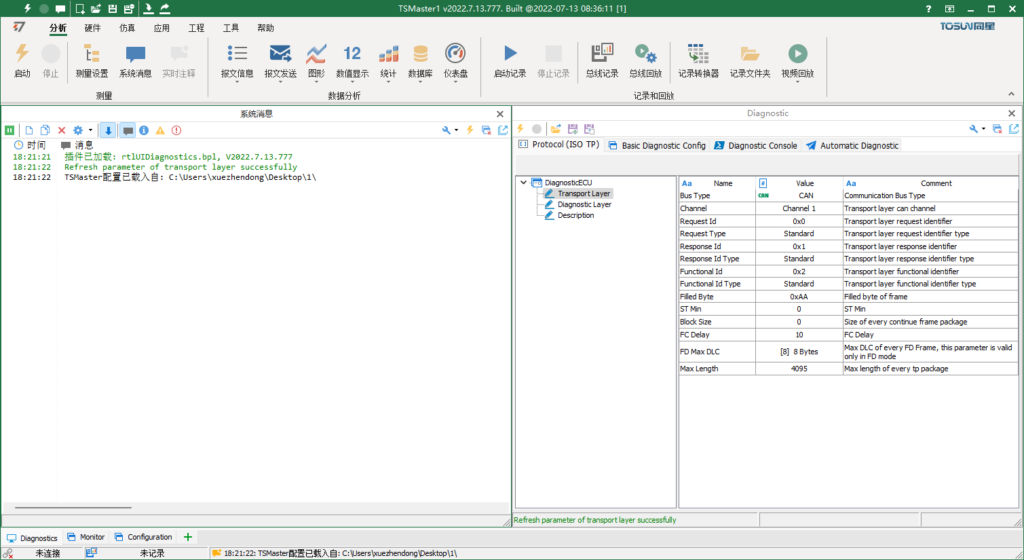
2、CAN channel setting
As shown in the figure below, set the CAN channel by selecting Hardware and Channel at the top of the electrode: click Bus Hardware and Configure Baud Rate. Configure channel one to 1000kbps and channel two to 500kbps.
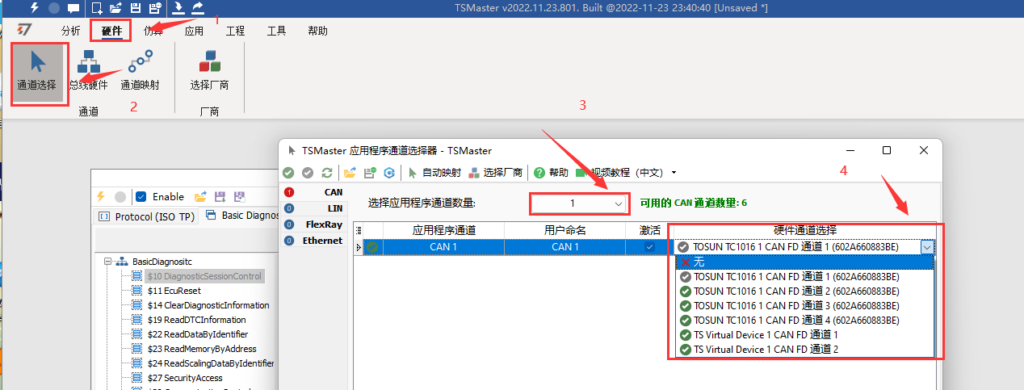
3、New UDS diagnostic module
Open or create a new uds diagnostic module.

Set the basic diagnostic parameters, Transport Layer of Protocal, and select channel 2 for channel.
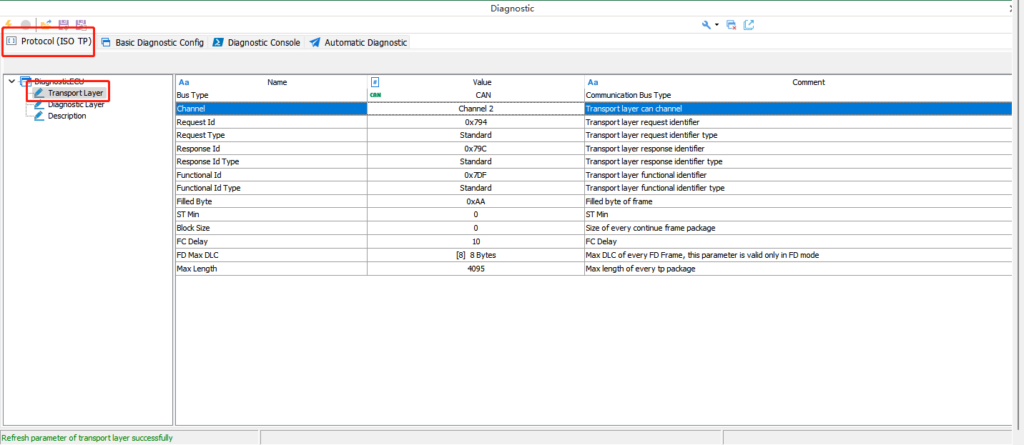
Set the Diagnostic layer parameter. Import the dll of the security algorithm.
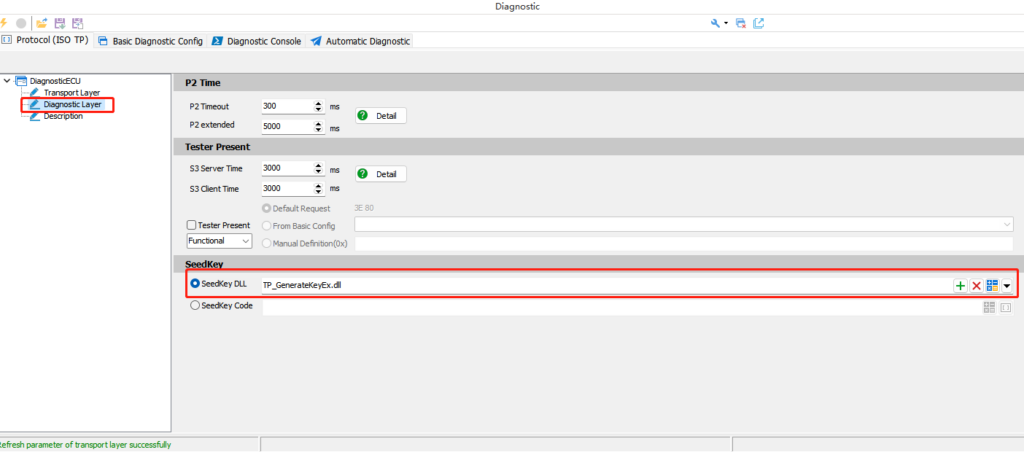
Second, flash bootloader process tutorial
Scrub process
1、Enter the extended session
Go to the "Basic Diagnostic Config" tab, right-click on the 10 services against the configuration file and add a new service.

Double-click the newly created service and change the callback type to 83.
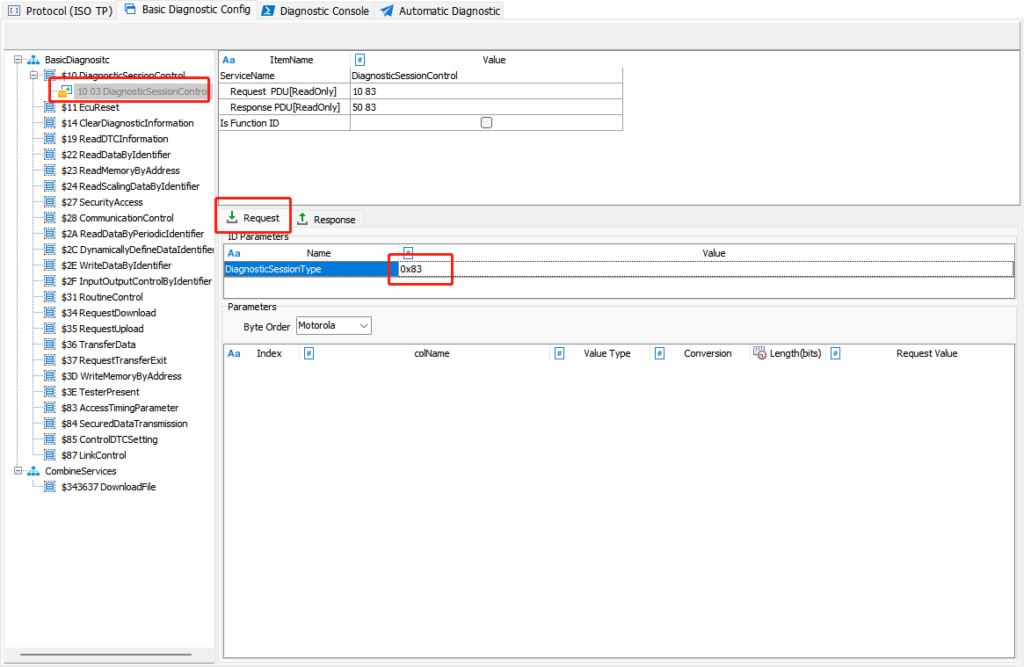
2、Create BT flash action
Go to "Automatic Diagnostic", right click on the left blank area and select "add a new uds flow".
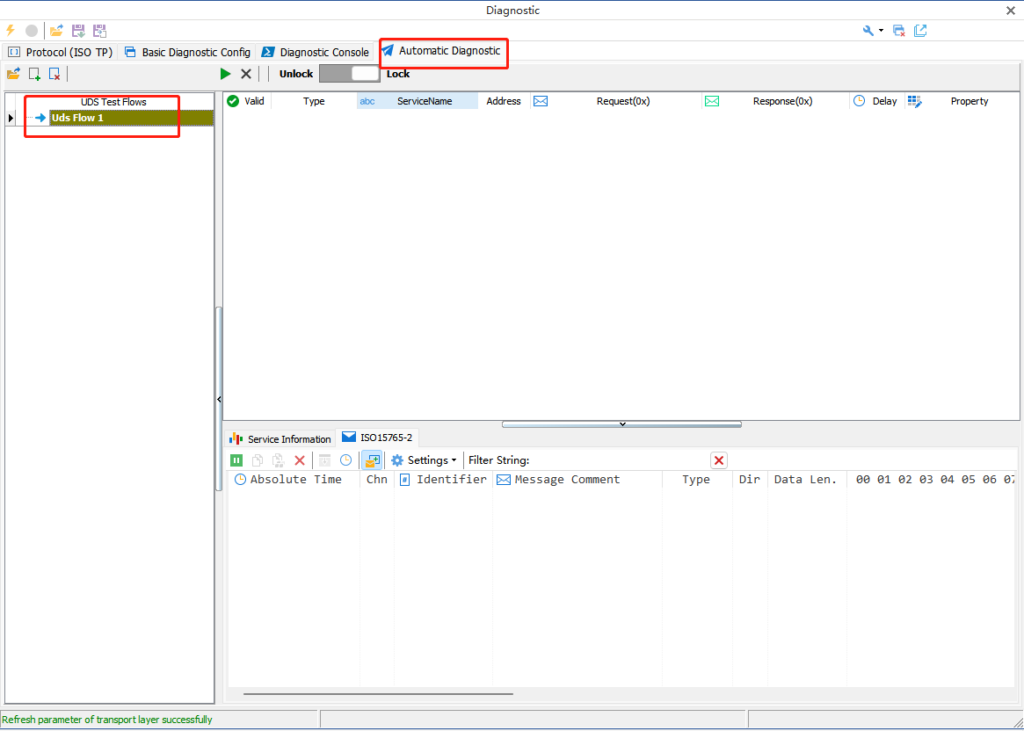
Switch to "unlock", then right click in the area shown in the box, select "Add new test step", "Normol", according to the company Select whether to use the function ID or the physical ID, and write 10 83 in the column of "Request(0x)"; configure the service in "Basic Diagnostic Config" and "Automatic Diagnostic" according to the configuration file. In the "Automatic Diagnostic" section, configure the refresh process.
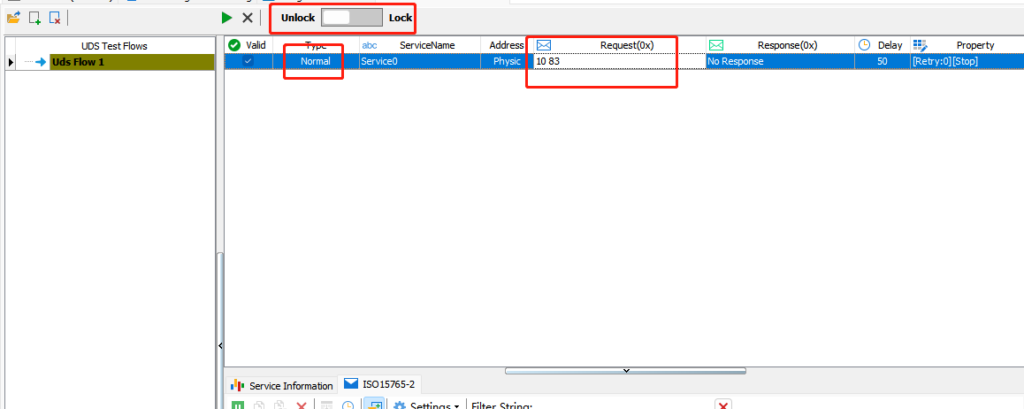
After entering the programming session, according to the profile process, you need to unlock it by the security algorithm, do not select Select Config when adding the action, but Seed&Key; then select the corresponding level according to the corresponding specification.

3、Load the file to be flashed
In the "Basic Diagnostic Config" tab, create a service, change the desired name in "Service Name", click on the + sign to select the file you want to burn, and then the bottom will show the data area in the file and the parameter information of each data area. The TSMaster will fully automate the process and get two important information, the address of the data to be flushed and the length of the data to be flushed.
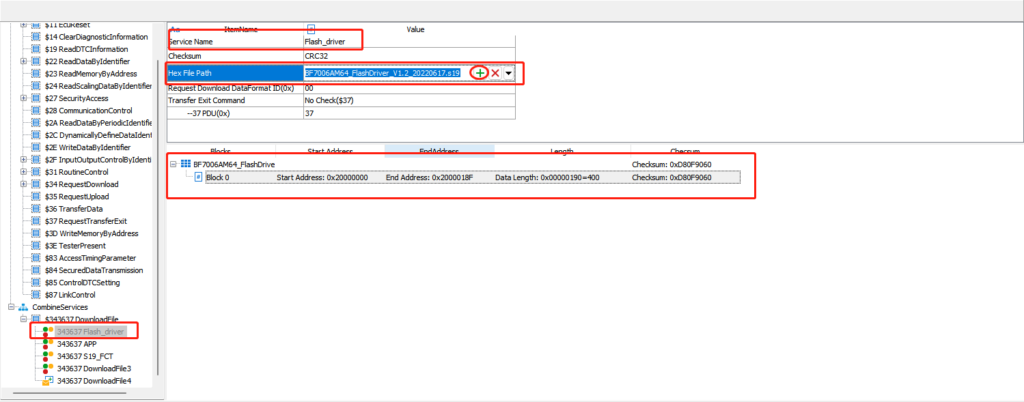
4、Manually configure erase service
After burning the s19 file, you need to perform a check, create a new service in 31, change the corresponding data, select "SystemVar" in the "Value Type" parameter below, modify the data length to 32, and finally add the variables.
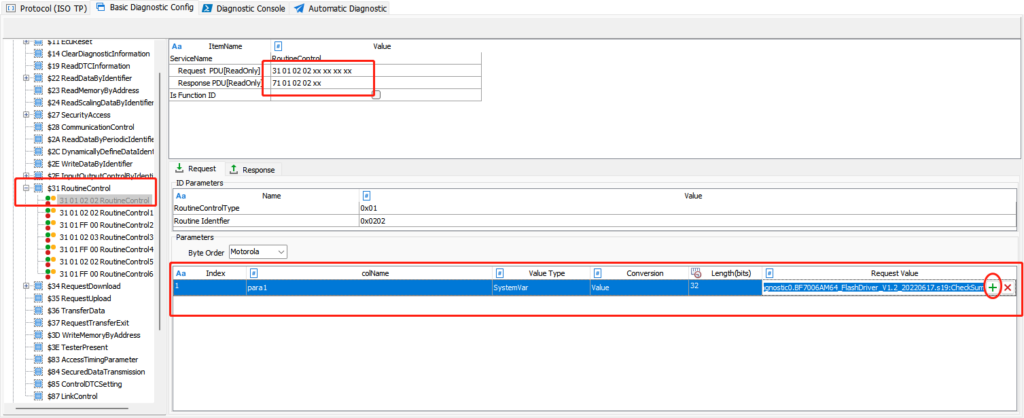
Then click on the + sign on the right side of the parameter list below and find the checksum parameter for the corresponding file in the internal variables. Click OK.
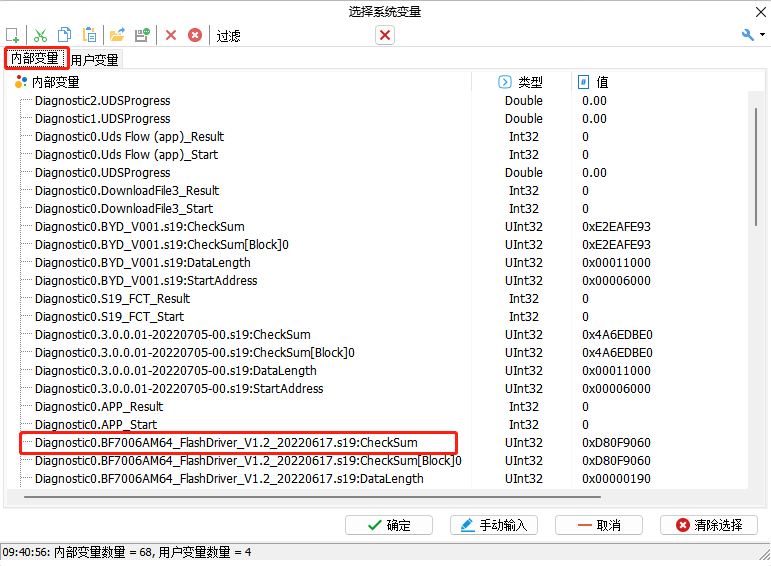
After this is done, go back and add the action to the corresponding burn file in "Automatic Diagnostic" after the process.

Then create a new "Erase" action, which requires the two parameters generated above.
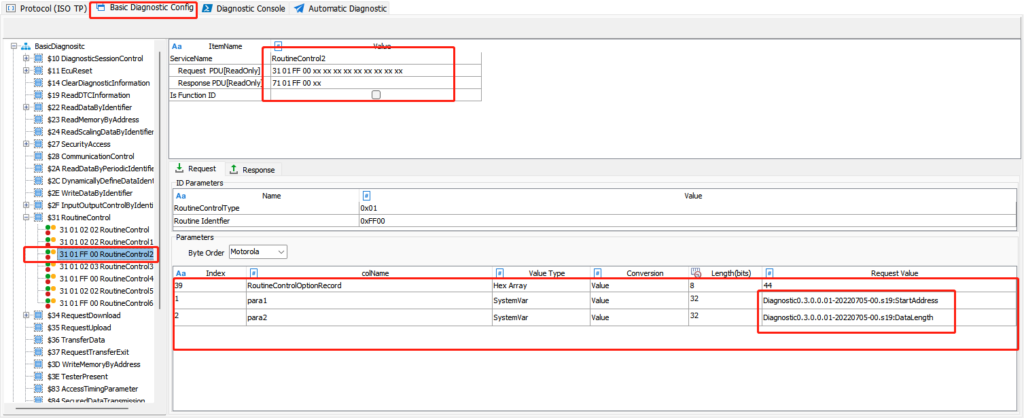
Then add the action to "Automatic Diagnostic".

5、Add new burn file
After erasing, add the new burn file, repeat the above process finally in the verification, and finally add the last process according to the configuration file. The entire configuration process is complete, click on the upper left corner of the boot and then click on the diagnostic in the run.
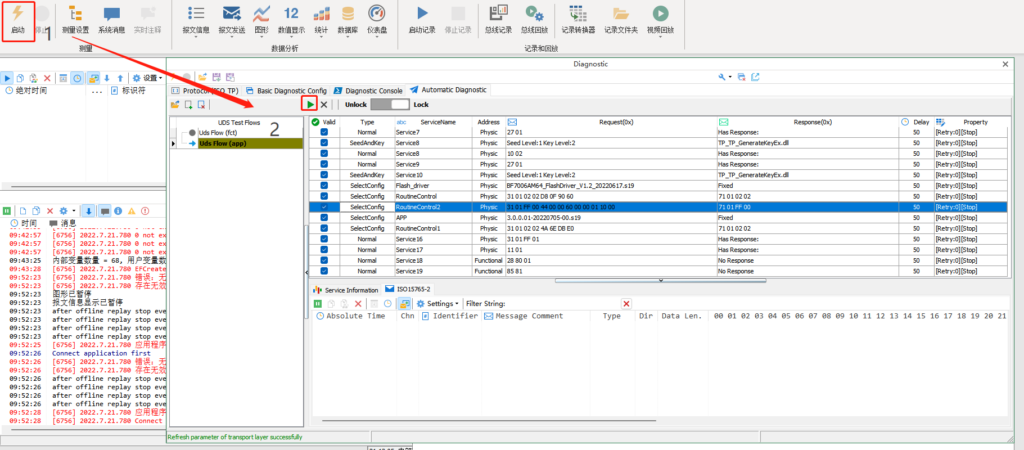
The program is being brushed.
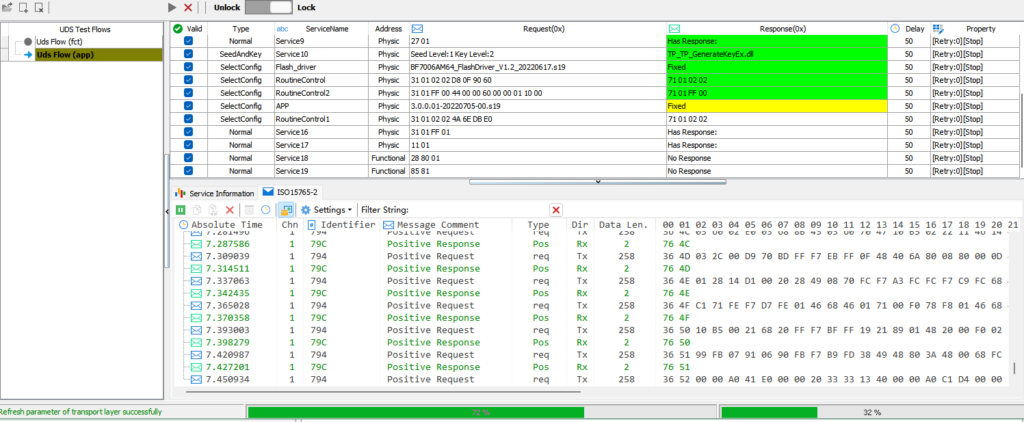
The response can be visually observed below after the swipe is complete.

6. Automatic configuration of erasure services
If you do not want to configure erase and checksum manually, you can automatically configure the erase service to configure accordingly.
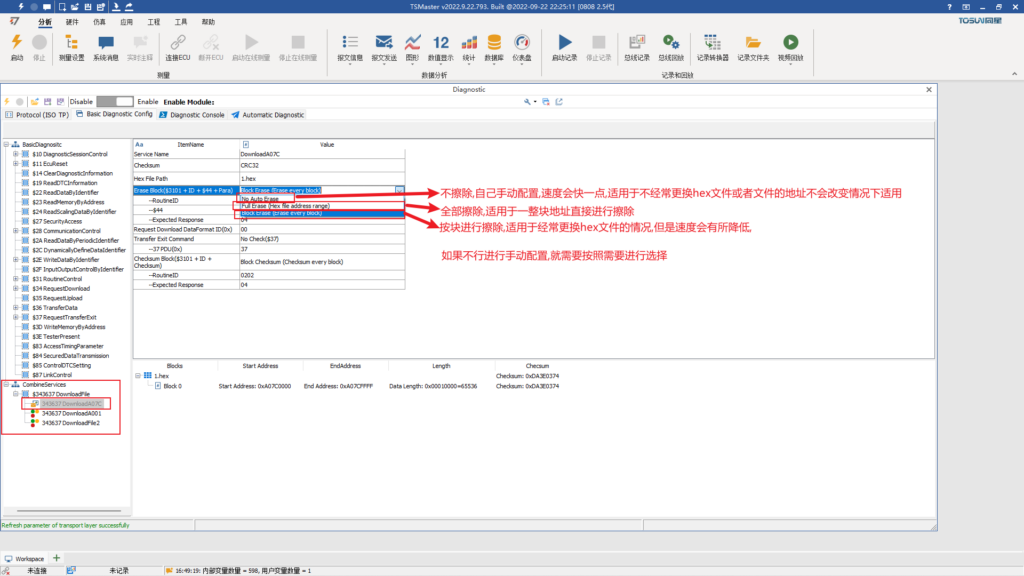
Select the appropriate response message.
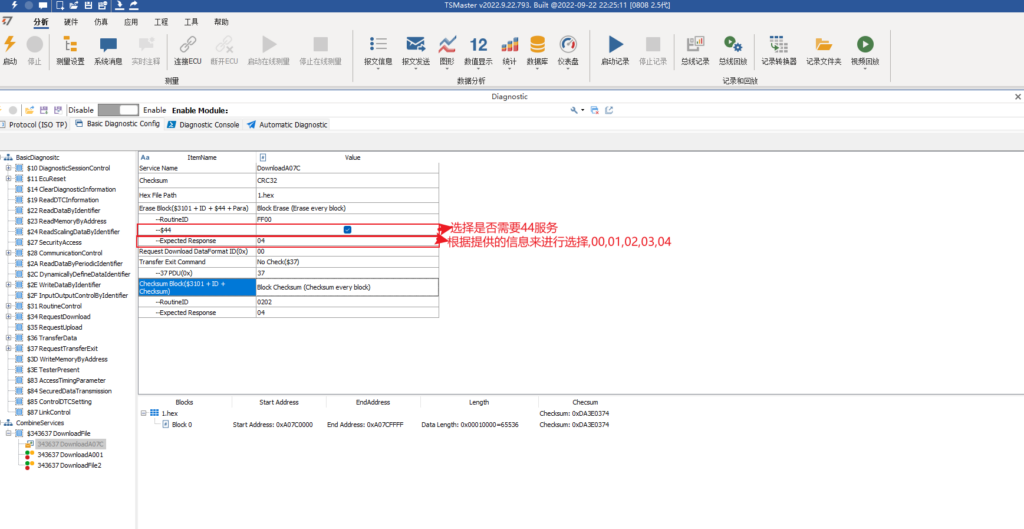
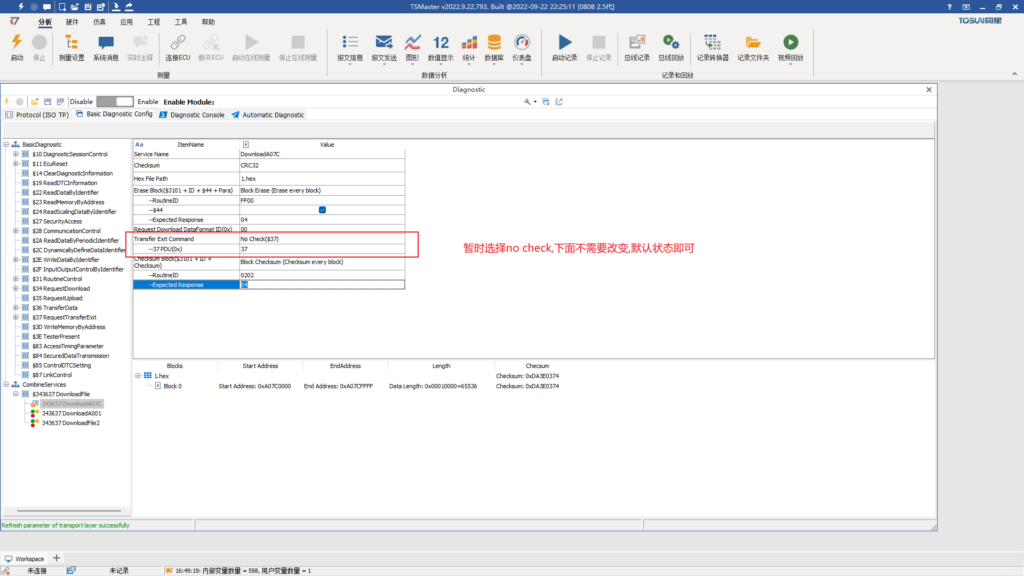
Checksum.
